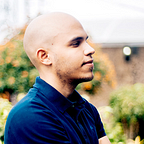Human-Centered Design and empathy in a global pandemic 🌎
First things first, what is human-centered design? 😬
You may have heard what Human-Centered Design is all about. If this is not the case, i can tell you that it is basically a 100% people-focused process. That means generating lots of ideas, sketches, prototypes, iteraries, sharing this with people and finally testing the designed solution.
I will try to give you my humble analysis for now and how we can put it into practice from our homes, remotely or with fewer resources. This is a process that consists of well-defined steps, and is used by some major corporations, there are 3 main steps that aim to build empathy with the people for whom your product is being designed (whichever it is). Here’s how it works:
This whole process aims to sensitize us and put us at the shoes of the users or people who use our products; in other words, in other words this process tries to
Big brands have done this with this process or with others ( it’ s valid), but always trying to understand the situation and the world context at this time.
As creatives or product designers, entrepreneurs, marketers or simply as human beings; we must try to generate more empathy (again). It allows us to generate products or contribute to their conception.
There are some tools or methods we can apply to make this process more beneficial:
Interviewing people 👂
This allows you to get firsthand the testimony, needs, concerns or desires that a person has. You immediately feel connected to the story they have to tell. You can do this either by video call or simply by a chat on your phone.
Teamwork 📞✉️
Surely (or more) minds think better than one. Under this idea, take advantage of this time to be more connected than ever with your teammates or people close to you. It helps to stay creative, generate ideas and propose new solutions to help not only a niche or business but the world.
Prototyping, share and repeat ✍️📝
Believe it or not, to shape your ideas in a tangible way allows to have a complete vision of the product or concept that is being developed. Sharing these hypotheses or concepts with people and receiving their constant feedback will allow you to constantly improve your product or service. However this process does not die there, it is important to iterate in order to create a more robust product that can better satisfy the needs of your users
Some important efforts that brands have put in place during this pandemic have been the following:
These are some examples of how big brands are trying to generate products that will solve or clarify people’s needs during this pandemic. Many of these efforts are aimed at informing the population or safeguarding the effort that each medical staff makes every day.
The important thing is that all of us as individuals can apply these principles and try to help our society, staying creative and innovative regardless of the difficulties, in short what I can synthesize from this process is with the intention of motivating you to continue innovating, creating, sharing, and ultimately helping each other … being more empathetic
